
Quick Start - Schedule Tasks

Quick Start - Schedule Tasks
There is no one best way to capture and structure tasks for all users adequately. The following two ways of proceeding are typical and obvious.
Enter tasks one at a time.
Enter the task name, date, work, and any other task properties, then input for the next task.
Focus on one aspect at a time for all tasks.
Prepare the list of all the tasks → Build the task in a tree structure → Enter the date of all tasks → Enter the resource for all tasks → Other aspects in order.
Suppose you are very familiar with the project (e.g., many years of experience managing similar projects). In that case, the first approach may be suitable.
We recommend the second approach as it is usually more efficient and means less rework. By following the steps:
First, we need to know what tasks need to be done for the project, and we are familiar with input when thinking. However, from the point of view of input efficiency, we recommend having a task list ready before inputting.
In general, it may be sufficient for small projects to have a task list in mind; for large or complex projects, it is better to use a tool to create the task list.
A mind map is a suitable tool for thinking about what needs to be done and preparing the list, and we can use it to develop the task names in a tree structure. QuickPlan supports creating a new project by importing it from a mind map file in OPML format.

Of course, we can also prepare the task list in an Excel file, a plain text file, and even on paper.
Enter tasks in order, then change the task's outline level to create the tree structure. If needed, we can move the task up / down to adjust the order of tasks.

There is an option to control the default date of the new tasks - let the date of the new task be the same as the previous task, or let the start date of the new task be the same as the end date of the previous task.
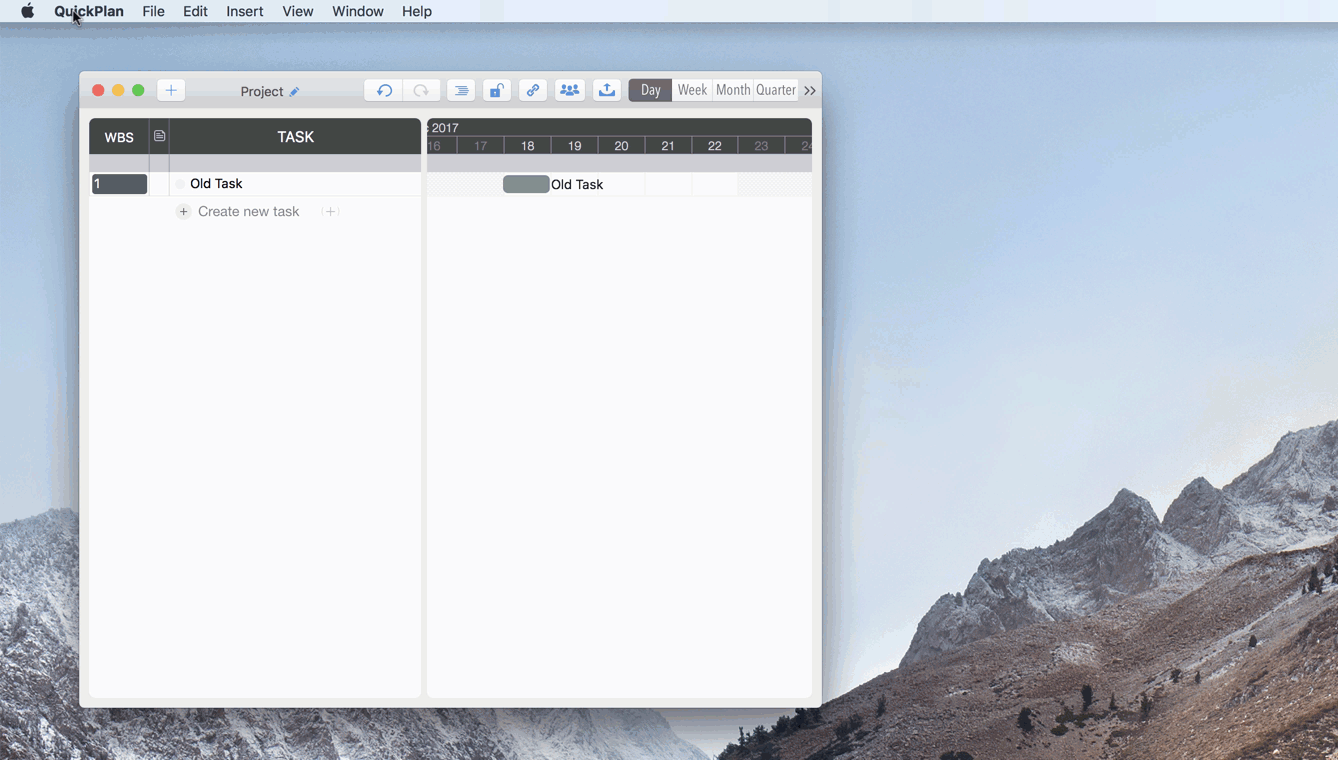
QuickPlan for macOS 5.1 introduces a new way to help planning more efficiently for some cases.

Select a task
Mouse click on a task, or double-click the empty space in a task row on Gantt Chart
To be more efficient, we suggest switching selecting task by keyboard shortcuts - "d" or "↓" key to select the next task, "e" or "↑" key to select the previous task
Alternatively, press the "indent" and "outdent" buttons on the Touchbar

QuickPlan for the macOS version 5.2 introduces two new methods to indent and outdent tasks.
On iOS devices, QuickPlan supports changing the outline level of tasks using "quick left/right" gestures, which are more intuitive and efficient. To adjust the outline level of all project tasks, our practice is to sync (or transfer) the projects to the iPad and perform this step on the iPad.
We may need to adjust the task sequence in a task group or across multiple task groups
Or press the buttons on the Touchbar

Click the "task link" button on the toolbar, then to follow the tips (which moves with the mouse) to link tasks
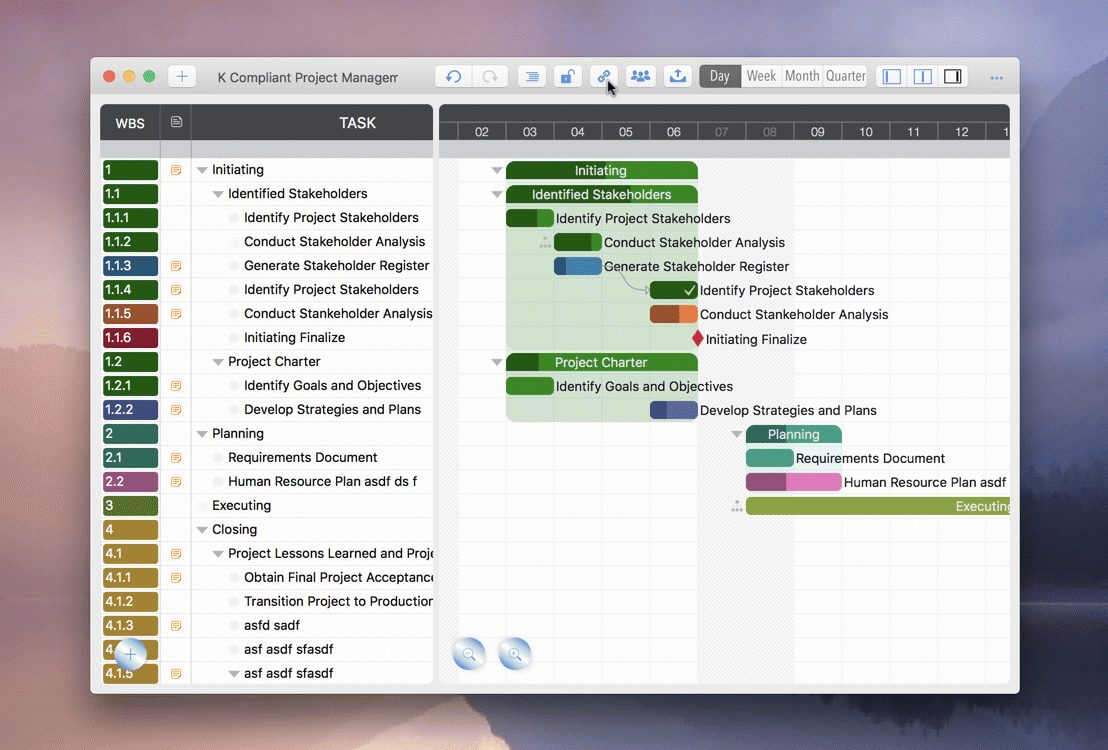
QuickPlan for macOS 3.3 introduces a new method to maintain the task directly (without the need to enter the "task link-state," as described in the preceding approach).
QuickPlan for macOS provides several methods for changing the task date and duration - please choose the most efficient and appropriate method for the situation. If we familiarize ourselves with these methods in advance, it will be a great help in improving work efficiency.
For example, how many methods are there to change the task start date? Below, please check the methods.
Edit the task "Start" column in the Outline list.
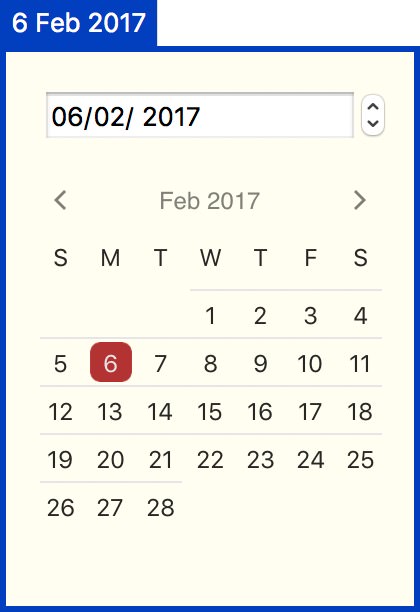
Use mouse gestures to change the task date on the Gantt chart.

Change start date on the Inspectors.
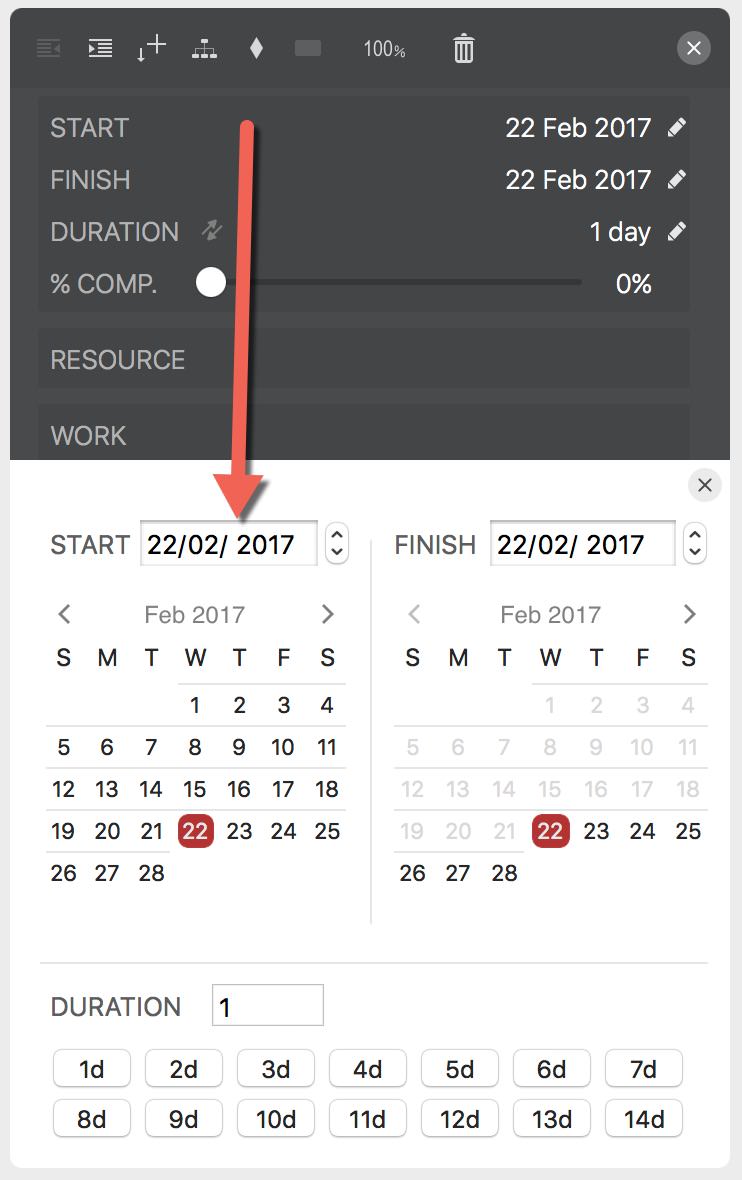
Select the cell "Start" of a task and change the start date via the buttons of the touchbar.

How can we efficiently change the start date of the task? If the target date is close to the current start date, tapping the touchbar is much faster than selecting a new date via other common ways. For example, to move the task start date by two days, just double tap the "+ 1d" button on the TouchBar, to move the task start date by 11 days, just tap "+ 10d" and "+ 1d".
Then another question for you - how many methods can we use with QuickPlan to change the task duration? Click here to check the answer.
By changing task finish date
By changing task duration

QuickPlan does its best to provide as many methods as possible - some effective, some intuitive. There is no one best method for all cases - it depends on our experience and how familiar we are using the app.
To be efficient, a basic principle is to "avoiding keyboard typing." In most cases, using the mouse to select and the keyboard shortcut to type is more efficient than typing. When typing, QuickPlan provides additional buttons and keyboard shortcuts when possible. For example, in the duration input window, there are some buttons that we can use to change the duration quickly.
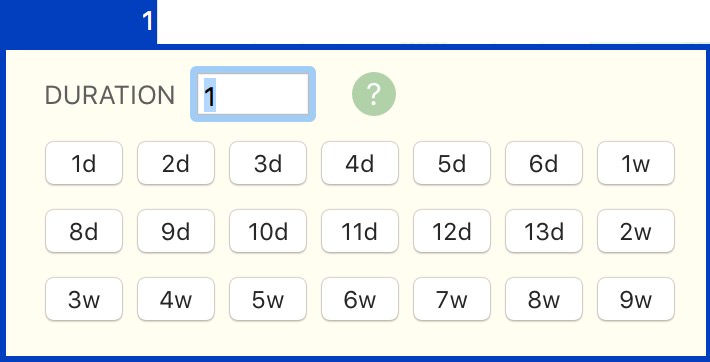
Change task duration AFTER has changed the start date of the task.
In comparison, most tasks have shorter cycles. The keyboard shortcut "⌘1…9" and "⌘⌥1…9," and the duration buttons on the touch bar are beneficial to change the task duration efficiently.
To move a task from far away to a date near the start of the project. "⇧⌘ ←" is a good start to move the task to the project start date, and then use "⇧→" to the target date.
When updating the task date and duration on the inspectors, we recommend using one hand to select the task and the other hand to work with the mouse on the inspectors.

In some cases, it can be very efficient to change the task date by copying it. We can move the task group to January 1 and change the start date of a task to February 1, then copy the cell (February 1) to other tasks whose target date is in February. Using the keyboard shortcut, we can complete the task very quickly.
Then switch to other aspects (e.g., resources, labor, and cost), one at a time, using similar options as the previous process for task date and duration. We can be super-efficient if we have enough practice in the skills.
© 2013 ~ 2024 COPYRIGHT QUICKPLAN | All Rights Reserved
SwiftApp INC.